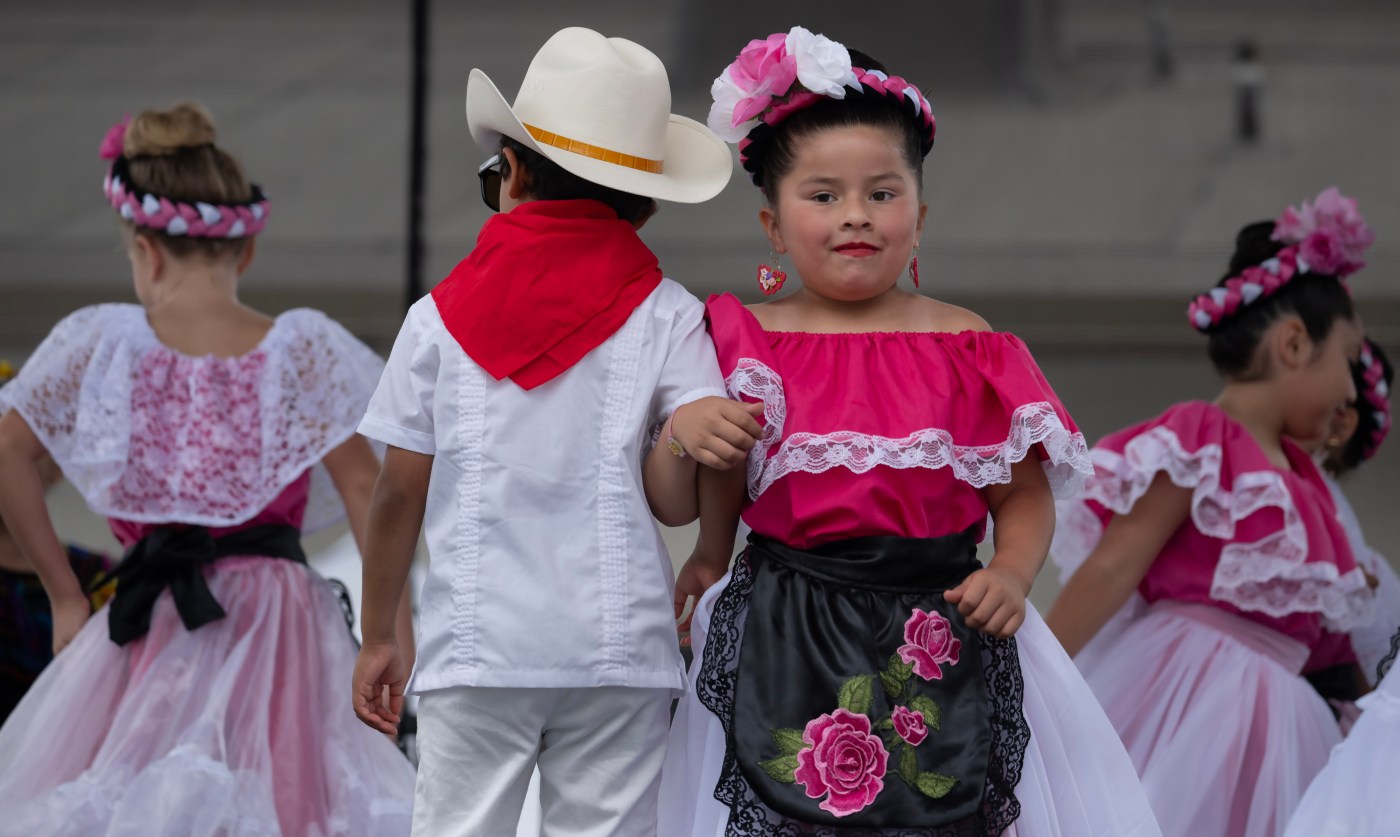It’ll be just one short answer on one government form, a few jots that figure to have only a limited impact on any individual’s day-to-day life.
But for Neda Sasani, 44, merely having the chance to respond to one of the new race options on the 2030 census is life-altering.
“I’m a lot of things,” Sasani said before rapidly clicking off several personal traits – a mother of two, an operating room nurse, an Iranian-American, a resident of Pasadena, a new and “very enthusiastic” pickleball player.
“But I’m not White.”
Nope. And the next census won’t force her to say she is.
The Office of Management and Budget, which runs the U.S. Census Bureau, announced in March that for the first time in 27 years it will make some fundamental changes in the way Americans can identify their racial and ethnic identities.
Specifically, the 2030 Census (and census-related surveys leading up to it) will include seven broad categories for race: White, Black or African American, Hispanic or Latino, Asian, American Indian or Alaska Native, Middle Eastern or North African, and Native Hawaiian or Pacific Islander. That’s up from five categories offered in previous censuses.
And while the census won’t entirely dump the long-running “ethnicity” question that in recent decades has alternately pleased and vexed some Latino people and groups that advocate for them, it will merge the idea into a single, catch-all question: “What is your race and/or ethnicity?”
Related Articles
US changes how it categorizes people by race and ethnicity
One Bay Area county sees population gains in 2023. Is the exodus over?
Gen Zers are choosing Texas for their new home more than any other state
Valentines riddle: Did pandemic kill romance in California – or did it just migrate inland?
That means people who identify as Latino or Hispanic – a concept that’s more popular in the United States than it is in Spanish-speaking countries around the world – can opt to be described as such racially. It also means American citizens and residents from countries in the Middle East and North Africa – a group that includes between 3.5 million people (if you believe the 2020 census) and up to 8 million people (if you believe some advocates) – will be able to list their race as MENA, meaning Middle Eastern or North African. Previously, their options were limited to “other” or “White.”
“For years, a government form would say I was one thing. But when I’d go to the store or whatever, particularly if I’m not in Southern California, that’s not how I was seen,” Sasani said.
“I don’t think this changes the ‘seen’ part,” she added. “But at least the government is figuring out what’s real.”
Speaking up
In one sense, the new rules could shake up the demographic tallies in Southern California more than they will in any other region of the country.
About 3.2 million people who live in Los Angeles, Orange, Riverside and San Bernardino counties listed “White” as their race and “Hispanic or Latino” as their ethnicity in the 2020 census, and experts say it’s unclear which label they’ll choose when given an “either/or” option. And while the local numbers aren’t as big for people from the Middle East and North Africa, data from the Migration Policy Institute shows Los Angeles is the top county in the country for immigrants from at least 20 of the 43 countries that qualify for that category, while Orange, Riverside and San Bernardino counties often rank among the top 15 landing spots.
So it’s likely that the official tally of Southern California’s demography soon will shift dramatically, with the region possibly becoming much less White than it is now. That, in turn, could affect the things that census information is intended to sway, everything from political maps to some federal spending to the languages and messaging used in advertising campaigns.
But demographers and others are quick to point out that new racial categories are part of a long-running census tradition of shifting questions to reflect social and political realities of the time.
Questions and definitions related to race, in particular, have been tweaked routinely since the first census, in 1790, when the count centered on “free white males.” In much of the 19th century, for example, the idea of “black blood” was central to identifying different races. In the 1930s “Mexican” was listed as a race.
What’s more, the decision of who fit into what racial box was a decision typically made by an “enumerator,” an in-person census worker who visited households and and sorted out racial descriptions based on their perceptions of who was who. It wasn’t until 1960, when mail-in census forms started to become more common, that Americans were allowed to self-identify their race. Even something that’s now seen as a routine level of nuance – tracking people who identify as more than one race – has only been in play since the 2000 census.
All of which is why many experts say the importance of the census, as a communication tool, is that it runs two ways.
“The census, and people’s choices on the census, are opportunities for us, collectively, to say who we really are,” said Bey-Ling Sha, dean of the College of Communications at Cal State Fullerton and a former public affairs officer for the Census Bureau.
“If self-determination is an important characteristic of a democratic republic, then it should include the ability to pick the labels that we most identify with,” Sha added.
Others agree, suggesting the new race categories will give voice to a lot of people who sometimes aren’t depicted in popular media or included in discussions about racial identify. Pew Research, for example, found that about 6 million American adults identify as Afro-Latino, and many might list themselves as Black or Latino in the next census.
Some experts predict the new categories will benefit people on both sides of the census form.
“Skin color matters, but it’s not as simple as just that. It’s also the Census Bureau trying to get at more detail about who the country really is,” said Mark Hugo Lopez, director of race and ethnicity at Pew Research Center, which sometimes uses census data to conduct race-related studies.
“The census is always trying to understand how Americans are identifying themselves,” Lopez added.
“So, in that sense, the new categories will be important for a lot of people, I think.”
New description, not new reality
Still, demographers and others point to another thing about the new race categories – they won’t actually change anything.
Nobody’s race or ethnicity will be altered based on new census options. If Southern California loses a million White people in the 2030 census, a possibility given the new categories and the region’s currently sluggish population growth, it’ll mostly be because those people already identify as something other than White. Any actual shifts in racial composition, locally or nationally, will be driven by the factors that typically drive demography – births and deaths and immigration.
“When the 2000 census happened, and they let you check more than one separate race, it was important, but not because it was discovering anything new,” Sha said. “Multi-racial Americans have always existed.”
The same dynamic, she added, will play out as people from countries as diverse as Iran and Sudan identify as their own distinct race. If the new numbers point to a previously unseen level of diversity, Sha suggested that, too, will be highlighting a long-standing reality, not creating a new one.
“The very concept of the United States being a ‘White’ country has always been mythical and historically inaccurate.”
Still, Sasani, the Pasadena nurse, said the new categories feel less about big data or politics than they they are about her comfort in a country that’s been her home since she was in second grade.
“The feeling of having the census allow me to identify as something other than ‘White’ is probably something that’s hard to understand unless you’ve looked at a form and not seen a label that applies.
“It’s not that I don’t like the label,” Sasani added. “It’s just never really described me. Now, I guess it will.”












